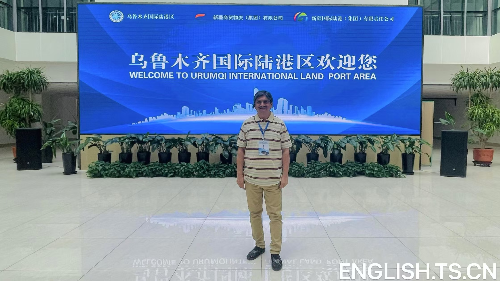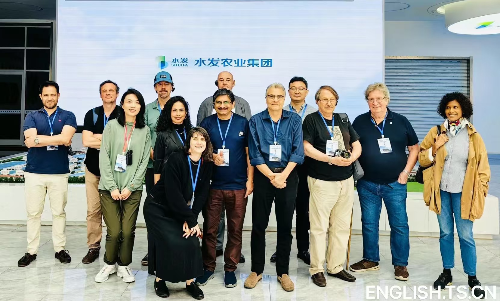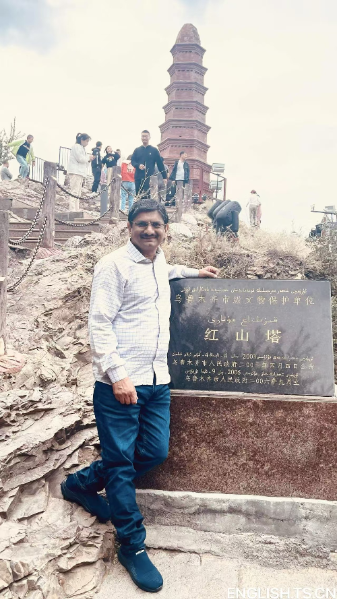Urumqi, as the capital of China’s Xinjiang Uygur Autonomous Region, serves as the pivotal center for political, economic, cultural, scientific, educational, and transportation activities across the Xinjiang Uygur Autonomous Region.
The city stands as a vibrant testament to the convergence of ancient history, cultural diversity, and modern development.
Being the largest city within a 1,500-kilometer radius has shaped Urumqi's role as a crucial political, economic, and cultural hub.
From its days as a critical juncture on the ancient Silk Road to its current status as the driving force behind China’s westward development, Urumqi offers a rich tapestry of history, culture, and economic vitality.
Historical Significance and Modern Vision
Urumqi’s legacy is deeply rooted in its role as a strategic stop on the Silk Road, an ancient trade route that connected China to the Middle East, Europe, and beyond.
Traders and travelers from around the world passed through this city, leaving behind a rich blend of cultures and traditions that are still evident today.
This history not only shaped Urumqi’s development but also cemented its importance as a bridge between East and West, a role that remains central to its identity even today.
In modern times, Urumqi has been integrated into China’s ambitious vision of westward development. The city plays a central role in the Silk Road Economic Belt, which is a crucial component of the Belt and Road Initiative (BRI).
Urumqi is at the forefront of China’s efforts to create a new development pattern that emphasizes international economic collaboration and cultural exchange.
As the principal venue for the core area of the Silk Road Economic Belt, Urumqi anchors initiatives such as the Urumqi International Land Port Area and serves as a key transportation and trade hub for the entire region.

Muhammad Asif Noor at Urumqi International Land Port Area in Urumqi, northwest China’s Xinjiang Uygur Autonomous Region.
The city has cultivated a robust industrial base that includes petrochemicals, machinery manufacturing, food processing, modern pharmaceuticals, coal, and metallurgy.
These industries, along with a burgeoning service sector comprising modern logistics, legal services, and finance, have propelled Urumqi’s economy to new heights.
Fixed asset investments surged, and the foreign trade volume witnessed an impressive rise, positioning Urumqi as one of the most economically dynamic cities in western China.
A Center for Connectivity and Innovation

A group photo of Muhammad Asif Noor and his friends in Urumqi, northwest China’s Xinjiang Uygur Autonomous Region.
Urumqi’s strategic location has enabled it to establish economic and trade ties with over 150 countries and regions worldwide.
This international reach is facilitated by the city’s robust infrastructure, which includes three national-level development zones, one comprehensive bonded area, and three autonomous regional parks, among others.
These zones create an ideal environment for investment, innovation, and industrial growth.
Moreover, Urumqi’s role as a connectivity hub is further solidified by the recently approved China (Xinjiang) Pilot Free Trade Zone.
Covering 134.6 square kilometers, this zone forms the backbone of Urumqi’s economic strategy, enhancing its role as a bridgehead for China’s opening to the west.
It encompasses an array of industries, including technology transfer, research and design, modern logistics, and more, fostering Urumqi’s position as a major player in international trade.
The city also prioritizes the development of its healthcare, education, and cultural sectors. Urumqi is actively promoting international collaborations in science and technology, particularly through the construction of Science and Technology Cooperation Parks and the Xinjiang Science and Technology Achievements Trading Center.
In education, Urumqi has strengthened ties with various countries, focusing on cultural exchange, research collaborations, and academic development.
Cultural Heritage and Ethnic Diversity
Urumqi’s multicultural identity is one of its defining characteristics. Home to a diverse population that includes Uygurs, Han Chinese, Kazaks, and Hui ethnicity, the city serves as a melting pot of ethnic traditions, languages, and cuisines.

Muhammad Asif Noor at Hongshan Park in Urumqi, northwest China’s Xinjiang Uygur Autonomous Region.
One of the most iconic features of Urumqi is Xinjiang International Grand Bazaar-the largest bazaar in scale in the world. This sprawling marketplace symbolizes the city’s historical role in trade and acts as a cultural microcosm where visitors can experience Xinjiang’s rich traditions. From intricate Uygur carpets to fragrant spices and handcrafted jewelry, the grand bazaar offers a sensory journey through the region’s heritage.
In 2023, Xinjiang welcomed 265 million visitors, marking an increase of 117 percent from previous year in tourism. Urumqi’s unique combination of natural beauty, historical significance, and cultural richness makes it an increasingly popular destination for domestic and international travelers.
Future of Urumqi- A Model for Sustainable Urban Growth
As Urumqi continues to grow, the city is also committed to sustainability.
It has been recognized as a National Ecological Garden City, which is a testament to its efforts in balancing rapid urbanization with environmental conservation.Moreover, Urumqi’s designation as a National Innovative City highlights its focus on fostering technological advancement and sustainable development.
The city is expanding its capabilities in sectors such as modern finance, healthcare, elderly care, and childcare, creating a holistic industrial ecosystem that benefits both residents and investors.
This forward-thinking approach has not only attracted foreign investment but also helped solidify Urumqi’s reputation as one of China’s most dynamic and forward-looking cities.
Urumqi is more than just the capital of Xinjiang; it symbolizes China’s westward vision and showcases the country’s ability to blend tradition with modernity.
The city’s economic dynamism, cultural richness, and strategic importance make it a vital hub for international trade, cultural exchange, and sustainable growth.
As Urumqi continues to evolve, it will remain a beacon of connectivity, innovation, and diversity in China’s westward journey.
Muhammad Asif Noor is founder of Friends of BRI Forum, co-founder of the Alliance of China-Pakistan Research Centres and senior fellow at the Centre for CPEC Studies at Kashi University, China.
Planner : Jie Wenjin
Reviewers : Hou Weili and Cheng Li
Editors: Gvlzar Mijit and Jia Shaoqi









